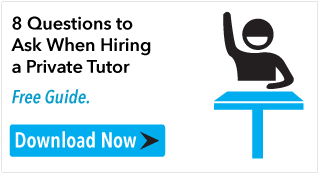There’s a common myth about standardized tests, that they’re supposed to gauge how smart you are. Why else would MBA programs require all students take a GMAT? Don’t...
7 Ways to Prep for the GMAT Using Practice Tests
 Lots of practice is key when prepping for the GMAT, and an essential part of that practice is taking practice exams that mimic the real test. Here are 7 ways to get the most out of a GMAT practice test:
Lots of practice is key when prepping for the GMAT, and an essential part of that practice is taking practice exams that mimic the real test. Here are 7 ways to get the most out of a GMAT practice test:
1. Experience the most accurate simulation of the actual GMAT, which is the free test prep software provided by the makers of the GMAT. Simply register at mba.com to download the software, which includes two full-length practice tests and additional practice questions. It's not necessary to schedule a test date at the time you register. Set aside a block of time and take one of the tests. The software will generate a score and allow you to review any questions missed. Use the test results as a diagnostic tool to identify areas where your knowledge is rusty or has gaps. Then focus on review of content, techniques, and strategy in those specific areas.
2. After taking the first official GMAT practice test, set aside the second test for later. Then find a book or software (preferably both) by another publisher that includes several practice GMAT exams. Use your book/software to take practice tests periodically, tracking your progress. Once you feel that you've improved sufficiently, use the official software to take the second practice test. Then compare the scores of your first and second official practice tests to confirm the progress that you've made.
3. Use a computer-based test to help you get accustomed to making notes and performing calculations on a notepad. Although it may not sound like such a big deal, it really is important to practice the experience of looking back and forth from the computer screen to the notepad as you're taking the test, because doing it for four hours at a stretch takes some getting used to.
4. Use a paper-based test to let you tone things down a notch. A computer based test won't let you skip questions and come back to them. That's the way it will be on test day, so it's important to practice that way sometimes. However, relaxing the rules on a day when you're tired or want to focus exclusively on content may allow you to get in some really productive practice that you couldn't otherwise.
5. Use a computer-based GMAT practice test to practice the Integrated Reasoning section. There are 3 features of the Integrated Reasoning section that a paper test cannot emulate: tables in which data can be sorted by column, tabs which can be shuffled to sort through multiple sources of information, and a pop-up onscreen calculator available only within the Integrated Reasoning section.
6. Practice on the go. Sometimes you may want to complete an extra practice test, but find that your schedule doesn't allow you to set aside enough hours to do the whole test at one sitting. In that case, carrying a practice book with you and taking the test in parts when you have 30 minutes here and there may be your only option to get in the practice. Mobile apps may also be good options for practicing on the fly. For example, BenchPrep offers unique online and mobile GMAT prep courses that work very well on both the I-Phone and Android.
7. Experiment with pacing. If you take too long on calculations, or linger too long over a tough problem, you'll run out of time and have to guess on the final questions in a section. On the other hand, if you push yourself too fast, you'll start to make more mistakes and likely miss questions that you could otherwise have gotten right. The only way to find your "happy medium" pace is to experiment and see how fast you can move through a test without adverse effects.
Check out MyGuru's tutors for 1-1 help with getting your best possible score on the GMAT.

